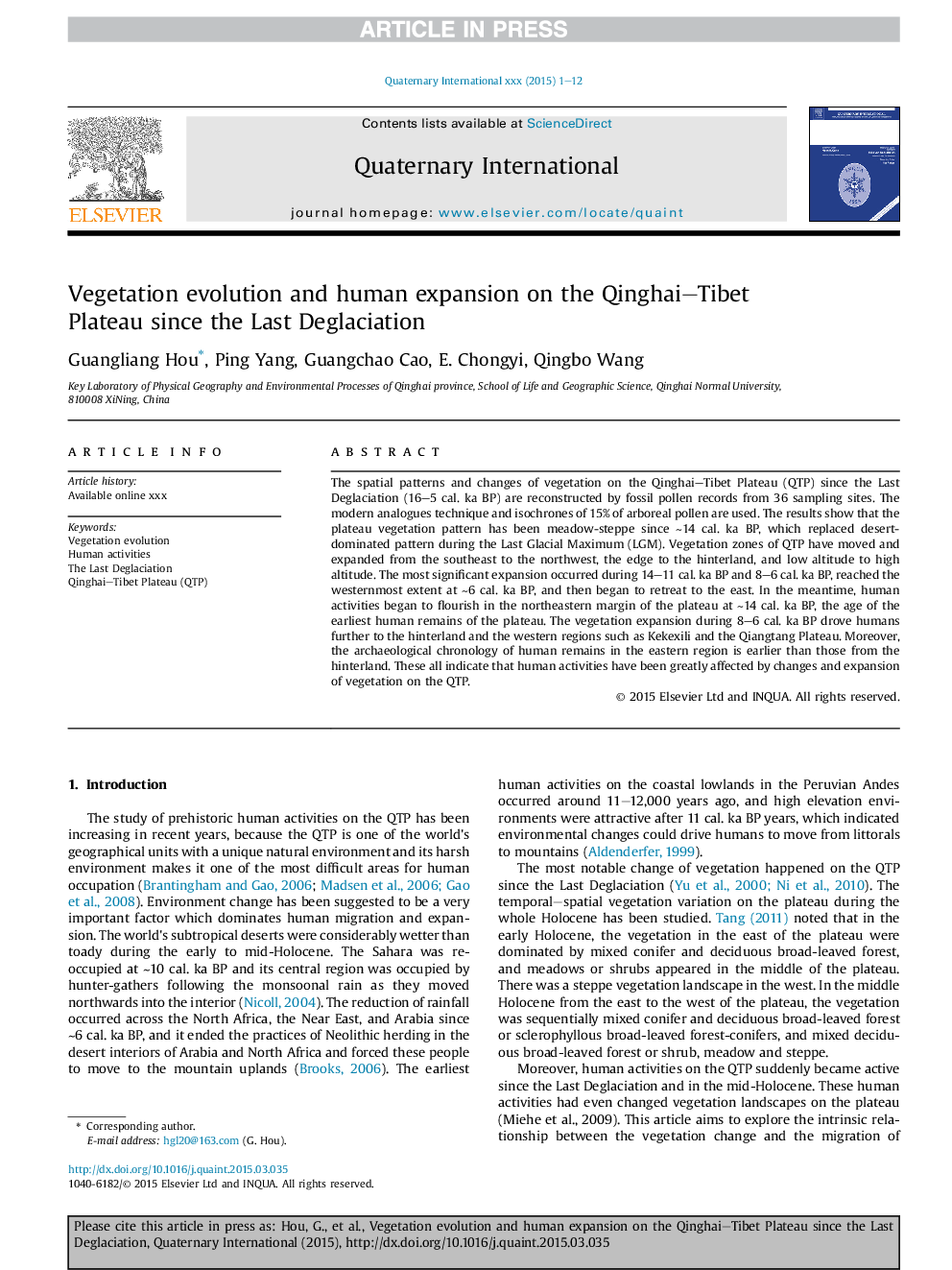| کد مقاله | کد نشریه | سال انتشار | مقاله انگلیسی | نسخه تمام متن |
|---|---|---|---|---|
| 5113874 | 1484080 | 2017 | 12 صفحه PDF | دانلود رایگان |
عنوان انگلیسی مقاله ISI
Vegetation evolution and human expansion on the Qinghai-Tibet Plateau since the Last Deglaciation
ترجمه فارسی عنوان
تکامل گیاهخواری و انسانی در فلات چینگهای-تبت از زمان انقراض اخیر
دانلود مقاله + سفارش ترجمه
دانلود مقاله ISI انگلیسی
رایگان برای ایرانیان
موضوعات مرتبط
مهندسی و علوم پایه
علوم زمین و سیارات
زمین شناسی
چکیده انگلیسی
The spatial patterns and changes of vegetation on the Qinghai-Tibet Plateau (QTP) since the Last Deglaciation (16-5 cal. ka BP) are reconstructed by fossil pollen records from 36 sampling sites. The modern analogues technique and isochrones of 15% of arboreal pollen are used. The results show that the plateau vegetation pattern has been meadow-steppe since â¼14 cal. ka BP, which replaced desert-dominated pattern during the Last Glacial Maximum (LGM). Vegetation zones of QTP have moved and expanded from the southeast to the northwest, the edge to the hinterland, and low altitude to high altitude. The most significant expansion occurred during 14-11 cal. ka BP and 8-6 cal. ka BP, reached the westernmost extent at â¼6 cal. ka BP, and then began to retreat to the east. In the meantime, human activities began to flourish in the northeastern margin of the plateau at â¼14 cal. ka BP, the age of the earliest human remains of the plateau. The vegetation expansion during 8-6 cal. ka BP drove humans further to the hinterland and the western regions such as Kekexili and the Qiangtang Plateau. Moreover, the archaeological chronology of human remains in the eastern region is earlier than those from the hinterland. These all indicate that human activities have been greatly affected by changes and expansion of vegetation on the QTP.
ناشر
Database: Elsevier - ScienceDirect (ساینس دایرکت)
Journal: Quaternary International - Volume 430, Part B, 12 February 2017, Pages 82-93
Journal: Quaternary International - Volume 430, Part B, 12 February 2017, Pages 82-93
نویسندگان
Guangliang Hou, Ping Yang, Guangchao Cao, E. Chongyi, Qingbo Wang,
